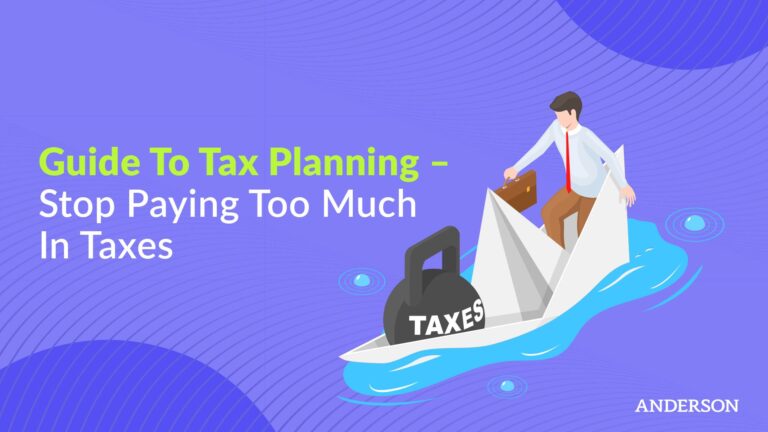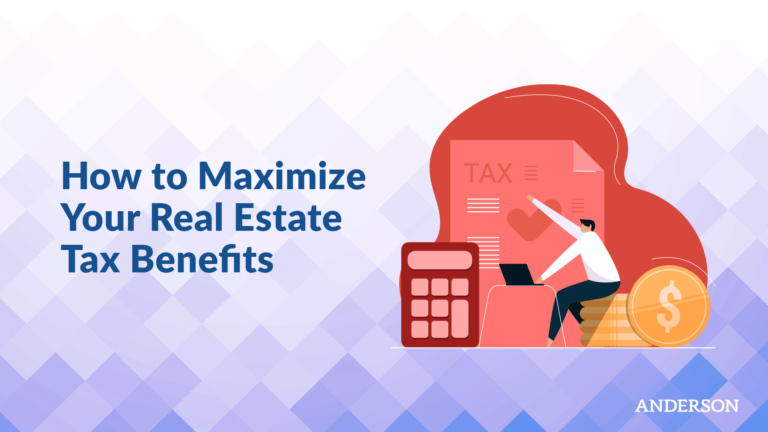
Updated Jan 25, 2023
Creative real estate investing is any investing strategy of financing that is different from traditional methods. These strategies can be a great way to invest in real estate when traditional options won’t work. To take your real estate investing to the next level, these creative strategies may be just what you need.
7 Creative Real Estate Investing Strategies
- Bird Dogging
- Wholesaling
- Rent-to-Own
- Fix and Flip
- Buy and Hold
- Real Estate Mutual Fund
- REITs
Creative real estate investing aims to find deals before other traditional investors can notice or act on them. These strategies also aim to find alternative financing models to fund real estate purchases. The total value of the housing market in the U.S. alone grew past $33 trillion in 2018. Real estate investing is a great way to grow wealth as the value of property gradually tends to increase over the years. The following strategies include options that require little to no actual investment, such as bird dogging or buying shares of a real estate mutual fund or exchange-traded Real Estate Investment Trust (REIT).
The length of time a real estate investor holds property is a major factor to consider since long-term investments can receive better tax treatment. Long-term gains over a year or two typically allow investors to claim the capital gains tax rate for that year. Short-term investments are treated as ordinary income which can result in large capital gains due to the high value of a home. This can put you at risk of moving into a higher tax bracket when paying real estate taxes. The additional income could also trigger additional taxation or alternative taxation.
Bird Dogging
A bird dog is an animal that hunters may use to help retrieve birds that have been shot down. Basically, a bird dog helps a hunter find their prey. In a similar sense, investors may be interested in paying a fee for leads on real estate deals. Bird dogging is something anyone can get into, but that doesn’t make it easy. Investors will typically only pay for profitable leads. However, bird dogging can be a good way to get started on your real estate investing journey. The reason why is because bird dogging teaches you how to find the best real estate deals. Ideally, you want to find a motivated seller, especially if they have not publicly listed their home yet. Creative real estate investing requires a little extra work, but the results can be worth it.
Building networks of potential buyers and sellers is a key requirement of being a bird dog in real estate today. Finding a deal is great, but you have to know someone or be able to find someone who will pay you for the information. Bird dogs may also network together, and there may be a local network in your area that you can join. Bird dogging is a low-cost way to start learning about real estate investing and the industry as a whole. As you build up capital, you can start moving to bigger and more complex investment strategies, such as wholesaling.
Wholesaling
As a popular creative real estate investing strategy, be aware that this option may require having capital. Similar to bird dogging, a wholesale real estate investor looks for deals, such as undervalued property entering the market. In this case, the investor finds both a motivated seller and buyer and usually gets a percentage of the purchase price as a fee. A bird dog may have provided the lead and may also have been compensated. A great place to look for deals are up and coming real estate areas that have seen recent major growth. The main difference between a bird dog and wholesaling real estate investor is that wholesaling may require the investor to place the property under contract. This means a motivated seller has agreed to a price and the investor holds the contract. This contract can then be sold to a motivated buyer.
Rent-to-Own
Rent-to-own is an investment strategy that offers some great pros with some cons. Rent-to-own requires the owners to agree to certain conditions with the buyer, who will become the tenant. Generally, the tenant will pay “rent” each month while living in the residence. The rent is paid to the owner and may be applied to the balance owed plus interest, similar to an owner-financed real estate loan and mortgage payments. At the end of the agreed-upon time period, the tenant may buy the property. You can usually expect to pay more money for this option. Since real estate investors sign a contract specifying the lease terms and option to buy, you may want to consult with a professional attorney to ensure your interests are protected.
There are some things to keep in mind about a rent-to-own contract or other money loans. Will you use the current value of the residential real estate, plus a premium for the current owner—or perhaps wait and see what the market value is when the contract expires? You can essentially lock in a price with a rent-to-own contract. But you can also run the risk of paying much more if future values do not increase as expected. Keep in mind that the contract should include details on who will handle maintenance, repairs, and more. What portion of the rent applies towards the balance due? Make sure to track your payments and keep all records.
Fix and Flip
Flipping houses is a great way to capitalize on undervalued deals that require minimal work and costs. A “fix and flip” is when a property is purchased, renovated, and resold for a higher price. The hope is that your profit will be greater than the costs associated with buying, materials, labor, advertising, and selling.
There are some things to keep in mind when thinking about real estate investing, and some strategies may not be the right choice. Sometimes, flipping a house can reveal hidden costs that can throw a wrench in your investing plans. House flipping can require backup capital or access to additional funding. Home renovation can also be a time-consuming project. Carefully consider your abilities and options before investing in a labor-intensive real estate project. This may be a strategy best pursued by real estate professionals with experience in investment strategies as well as construction. Advanced real estate investors may also be interested in flipping commercial real estate.
Buy and Hold
Buying property and holding it is a great way to build wealth. There are many ways to get started if you have the necessary capital. Buy and hold strategies depend on the value of real estate going up or appreciating over time. There is a tax benefit to holding investments for longer periods (over 1-2 years). You can also pair this strategy with others, such as renting the property out for either residential or commercial use. Renting can even be managed by third-party property managers. These companies can do everything from screening residents to handling maintenance. This allows the property owner to earn passive income as a landlord while building equity through epic real estate investing strategies. Not only will the property value hopefully increase, but you also have an income stream from renting which can be used to pay down the mortgage faster.
There are rental property tax deductions you can claim. You can also leverage your property to build your real estate empire. For example, you can essentially buy a property with a down payment and start earning rental income before you completely own the real estate. This property can also be leveraged to obtain a second mortgage used to place a down payment on another rental property, and so on. The stream of income from all sources can then be used to pay down any one mortgage much faster.

Real Estate Mutual Fund
There are other ways to invest your money into real estate while avoiding some of the risks. Usually, this requires teaming up with multiple investors. While the cash flow may not be as much as investing in property on your own, pooling investment funds with other people’s money will lower the risk associated with any given investment. Anyone interest in real estate investment strategies could find other investors with similar interests who want to team up and invest together. Joining forces allows investors to access properties with a higher value than they might have been able to fund alone. These can include properties with major buildings or improvements, such as skyscrapers or multi-unit apartment complexes.
Investors interested in real estate should consider joining a local real estate investors association (REIA). REIAs can be a great place to network with other investors and vendors, as well as learn about investment opportunities. You may also want to consider buying shares of a pre-existing real estate mutual fund. There are many companies that manage and offer access to mutual funds for real estate. You can also look for real estate trusts that can be traded on exchanges, such as REITs.
Real Estate Investment Trusts (REITs)
Trusts are a great way to manage assets while also providing legal protection. Another benefit of using a land trust to hold real estate acquisitions is the tax benefit. A real estate investment trust (REIT) is a legal entity that manages property and provides income to investors. Like a real estate mutual fund, an investor does not have to purchase an entire property to start investing. Almost any amount can be used to buy shares of a REIT—and this form of real estate investing eliminates most of the work required. The investor does not need to manage the property, handle repairs and maintenance, deal with tenants, or pay taxes on the property.
Traditional vs. Creative Real Estate Investing
Traditional real estate investing involves buying real estate with cash or a loan from a bank. These money loans or mortgage payments are used to fund real estate acquisitions. The property is usually purchased by the buyer after it has been listed by the seller. When they are unable to purchase property for the entire amount, real estate investors can look to traditional banks for a home loan. It’s a good idea to work with approved lenders insured by the Federal Housing Administration (FHA).
Generally, these home loans require a certain credit score and a down payment as well. A low credit score, high debt amounts, and other factors can lower your ability to obtain a traditional loan. Most real estate loans will require a down payment that can range as high as 20%-25%, in some cases. For a $300,000 parcel of land, a 20% down payment would require $60,000 upfront. In some cases, it may be possible to reduce the required down payment. You may also want to consider an FHA loan or Veteran Affairs (VA) Loan.
Creative real estate investing frees the investor from traditional constraints, such as credit scores and down payments. Some property will not qualify for certain loans. Unless you are already extremely wealthy, it can be hard to invest in larger real estate deals, such as for skyscrapers or apartment communities. Creative real estate investing also involves finding deals that have not or will not be listed on a multiple listing service (MLS) or similar platform. Finding a great property before it hits the market allows an investor a chance at a much better deal. Creative financing options also give investors more ways to invest.
What is Creative Financing for Real Estate?
If an investor is unable or unwilling to use personal funding or traditional funds, there are many creative financing to consider. Owner financing is when the owner or seller of the property agrees to finance the buyer. Another name for this process is “seller carry-back.” The buyer will sign a contract or promissory note for the purchase price and then pays the seller over time. Alternative funding options include crowdfunding or small loans from multiple parties, such as private investors, family, and friends.
It is also possible to take a loan from a retirement account to purchase property. A borrower would pay back into their retirement account the principal plus interest, in essence paying themselves for a loan. Before considering these and other alternative financing options, it’s wise to consult with a professional attorney.
Creative Real Estate Investing
There are many ways to get started investing in real estate and earning passive income. Even seasoned veterans may consider utilizing these creative investing ideas from time to time. Some options, such as bird dogging, allows one to gain experience with little investment. Other options, such as real estate mutual funds or real estate investment trusts (REITs), allow investors to pool resources and buy large properties on the real estate market. You can buy shares in these investments at increments you desire without having to purchase or manage an entire property.
REITs and Real Estate funds offer investors a decent return on investment without the normal risk associated with today’s market. Rent-to-own agreements are another good way to acquire real estate by arranging monthly payments with the owner.
Some of the best ideas use combinations of investing practices. Buying and holding property is a great way to earn money as property values increase. Investors can also rent out their property to residential or commercial clients to produce rental income. If you don’t want to deal with the hassle of managing real estate, you can hire property managers to do the job for you. Many investors are also interested in buying undervalued homes that need repairs with the intent of flipping them. You may also be interested in creative financing ideas for real estate investing. Remember to carefully read any contract before signing—you should always seek the advice of a lawyer with experience in real estate. Contact Anderson Advisors today for assistance with real estate investing, tax planning, and asset protection.
Free Strategy Session with an Anderson Advisor
Receive a detailed risk assessment to assist in lowering problem areas that could wipe out all of your assets with one wrong move. Speak with an Anderson Professional Advisor to get your FREE Strategy Session.
Limited-Time Offer: ($750 value.)











